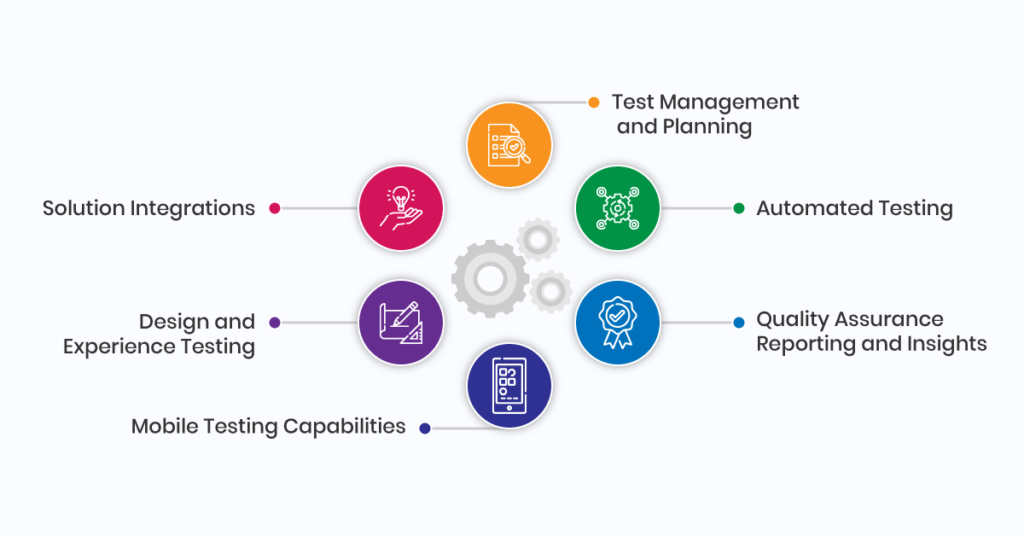
Using the right QA testing tool is incredibly beneficial to your software testing and delivery success. There is no shortage of Software testing tools in the market and many claim to take automation testing to the next level. With the introduction of the Agile approach and other new methodologies where a software product is iteratively released, traditional test automation becomes a challenge for the testers.
Why Software testing is important?
Software Testing is one of the most critical processes of any product or application. It helps to evaluate a comprehensive assessment of software or product and ensure that their product fulfils the desired results.
By conducting software testing it help companies to identify all the bugs and errors in the software before the implementation phase begins. If the bugs are not resolved before deployment, they can adversely affect the product performance.
So, selecting a right QA testing tool is important with right features.
Top features required for a software testing tools
Let’s see the six features of software testing tool that going ensure success of your project.

- Test Management and Planning
A good testing plan will have a plan and management system in place. Developers and tech teams need some way to systematically test parts and pieces of software. When you fail to test systematically, you increase the chances of missing out on key areas or losing time tracking the same sections of these tests over and over again.
A good test management and planning solution will have a track development system and test and quality readiness tracker. Test management is a continuous process that needs actionable solutions. Good test management and planning will help in developing dynamic test plans based on a project’s requirements and risk factors. - Automated Testing
The future of work and productivity depends heavily on automation. Up to 80% of executives expect their retail companies to adopt artificial intelligence-powered automation by 2027. That’s why automation should be present in operations that involve repetitive tasks. Using automation tools in testing can help eliminate hours wasted on repetitive tasks when testing and lessen a development team’s workload significantly.
Part of an automation testing tools list should include integration tests, smoke tests for build stability checking, regression tests, API tests, security tests, and responsiveness performance tests. - Quality Assurance Reporting and Insights
Part of the QA testing tools list for automated software testing should include reporting. This feature helps provide diagnoses on complex errors, giving high-accuracy insights into errors that might arise during testing. Spotting bugs and errors in code can be a strenuous ordeal for developers.
Up to 36% said that the traditional error monitoring process isn’t ideal because it takes too much time to spot all the details needed to fix an error in software, website, or program. With deeper insights and reports, developers no longer have to investigate issues line-by-line and find errors they need to address faster. - Mobile Testing Capabilities
More and more people are switching to mobile solutions to run several of their tech-based activities. There’s a massive shift towards accessing websites and apps through mobile apps. Accordingly, it makes sense for software to have mobile apps or a mobile-friendly web program at the very least.
When testing mobile apps, the experience could be very different from checking a desktop experience. Hence, automated software testing should be compatible with mobile programs and experiences. Choosing right QA software testing tool that tests all devices of all sizes can help save time and resources. - Design and Experience Testing
When testing an e-commerce website, design and user experience play a big factor in determining whether a site is ready for launch or not. This testing should include both functional and visual aspects of a website. In the past, website developers and designers had to test and check website pages one by one. But now that some e-commerce sites might have thousands of products, manual testing is now a tedious endeavour.
That’s why automated design and experience testing on e-commerce and even non-e-commerce websites are a big help to developers and teams. There are now many significant differences in the coding language supported by the browser and other factors. So, use a website testing software that checks each website on various browsers. - Solution Integrations
A QA testing software tool should have native integration with CI/CD tools. Having integrations will help in ensuring test automation remains integral to the development process. Having integrations with ERP software also helps communicate any necessary testing on launched products that need bug fixes so that all departments know of any downtimes and other schedules. Check out this compilation of ERP software companies that can help integrate online operations.
Conclusion:
A good Software testing tools allows you to trace all project artefacts from start-to-finish. It should offer a clear linkage between project core details right from the start; from requirement to a test case designed for that requirement and different cycles it has to run, to an issue raised for that test case.


